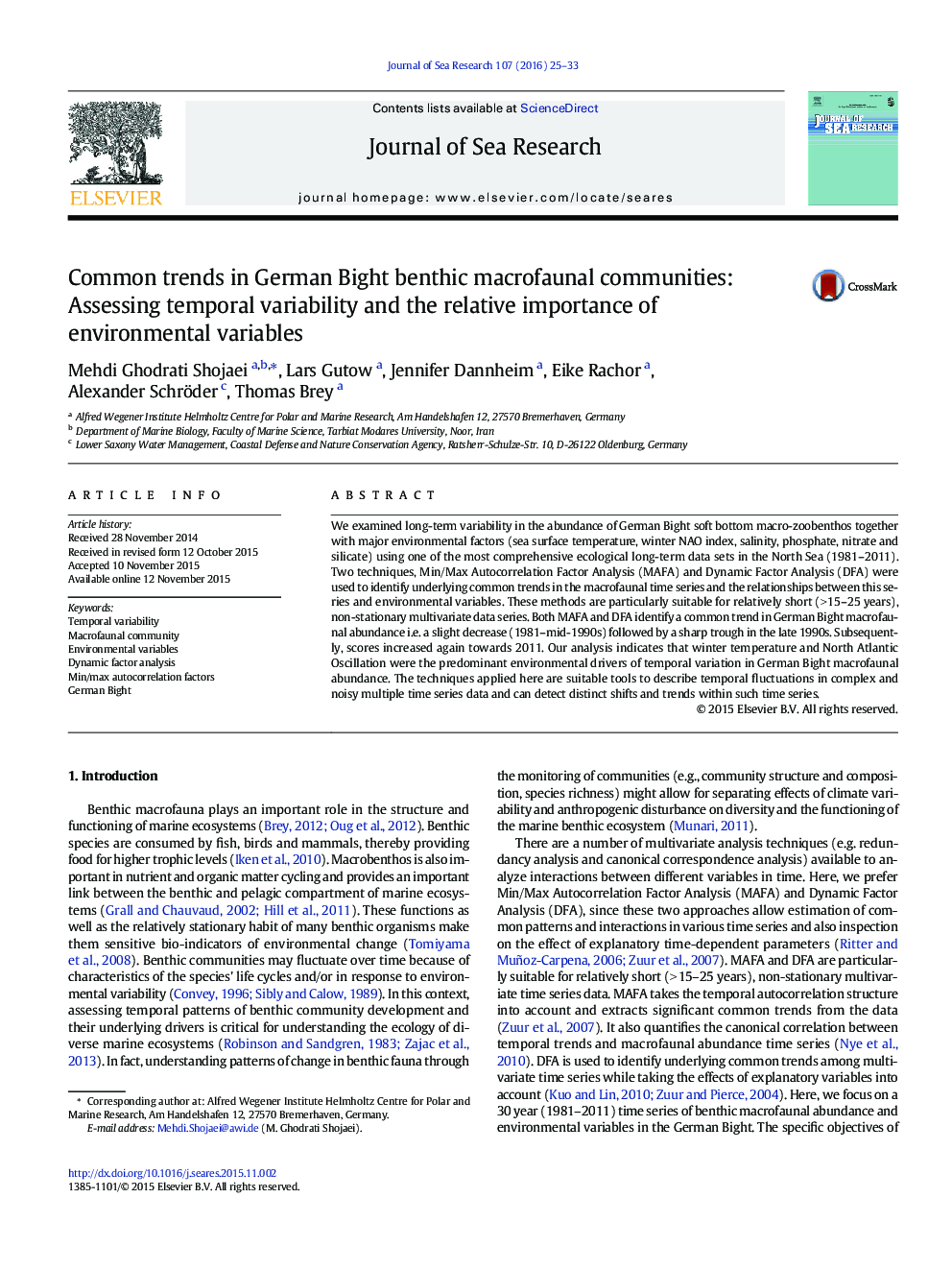| Article ID | Journal | Published Year | Pages | File Type |
|---|---|---|---|---|
| 4549573 | Journal of Sea Research | 2016 | 9 Pages |
•A 30 year data set was analyzed for German Bight macrozoobenthos dynamics.•SST and NAO are significant drivers of temporal variation in macrofaunal abundance.•Benthic macrofaunal abundance varied remarkably at decadal and sub-decadal scales.•Our analysis indicates substantial anthropogenic impacts on benthic communities.
We examined long-term variability in the abundance of German Bight soft bottom macro-zoobenthos together with major environmental factors (sea surface temperature, winter NAO index, salinity, phosphate, nitrate and silicate) using one of the most comprehensive ecological long-term data sets in the North Sea (1981–2011). Two techniques, Min/Max Autocorrelation Factor Analysis (MAFA) and Dynamic Factor Analysis (DFA) were used to identify underlying common trends in the macrofaunal time series and the relationships between this series and environmental variables. These methods are particularly suitable for relatively short (> 15–25 years), non-stationary multivariate data series. Both MAFA and DFA identify a common trend in German Bight macrofaunal abundance i.e. a slight decrease (1981–mid-1990s) followed by a sharp trough in the late 1990s. Subsequently, scores increased again towards 2011. Our analysis indicates that winter temperature and North Atlantic Oscillation were the predominant environmental drivers of temporal variation in German Bight macrofaunal abundance. The techniques applied here are suitable tools to describe temporal fluctuations in complex and noisy multiple time series data and can detect distinct shifts and trends within such time series.
